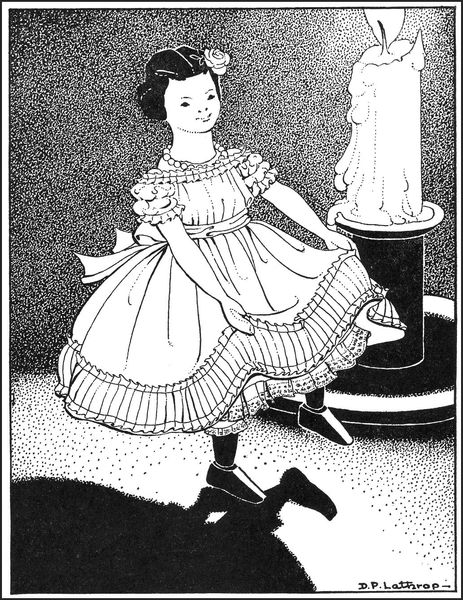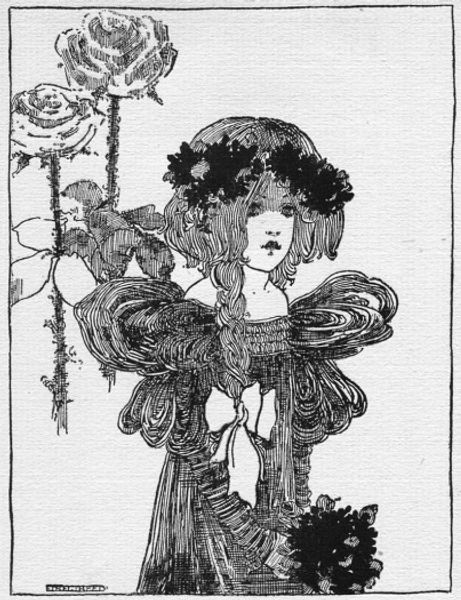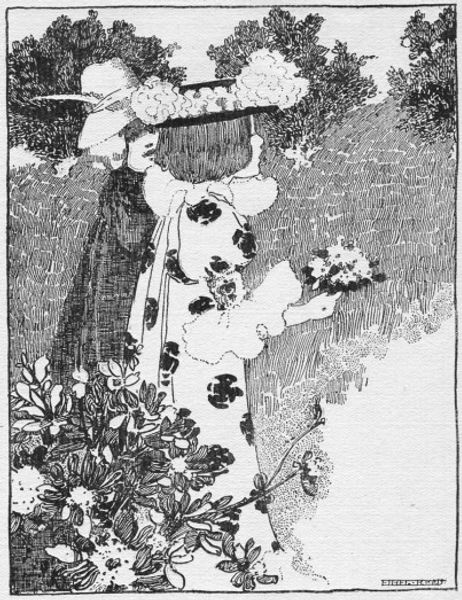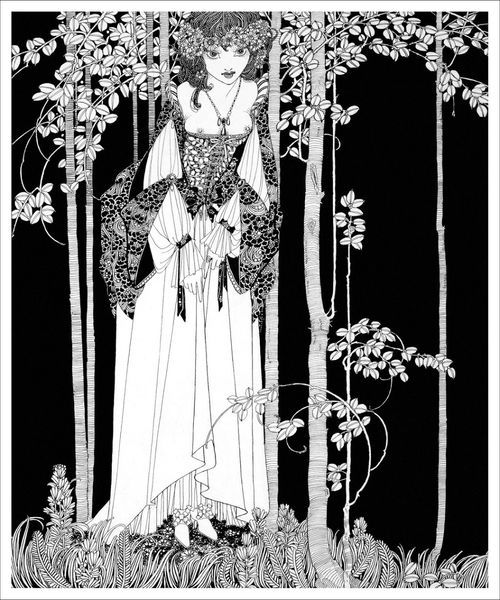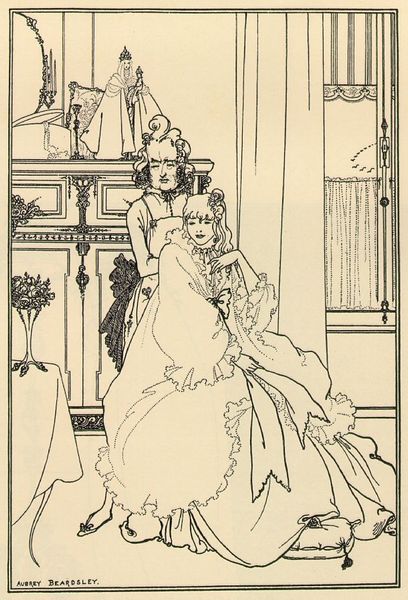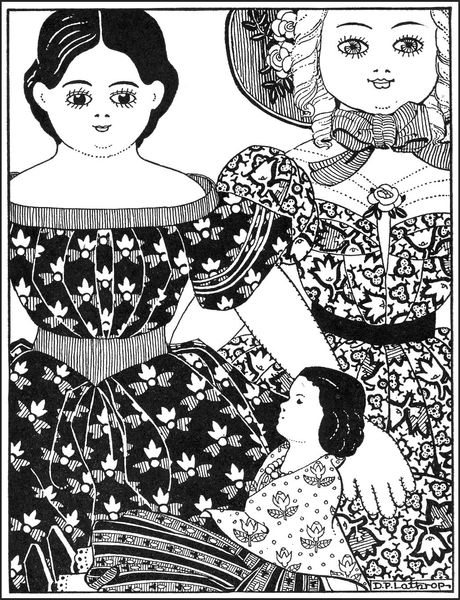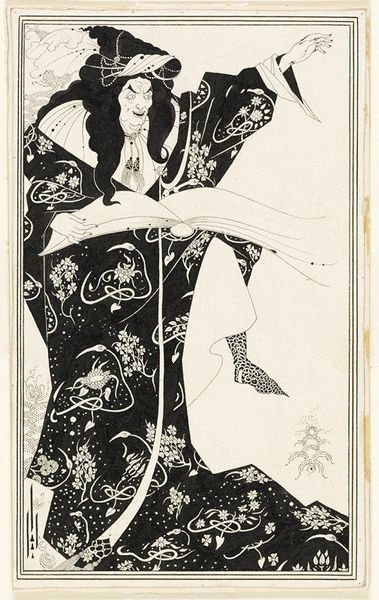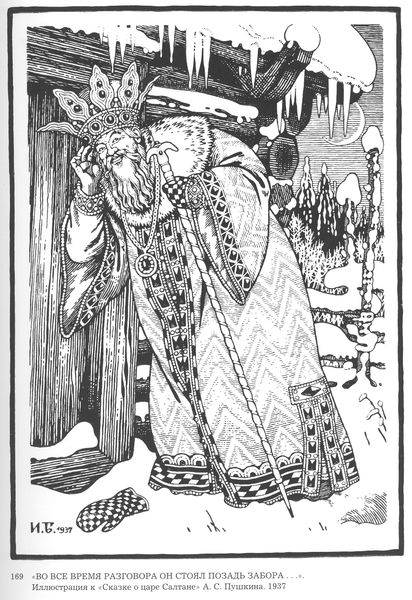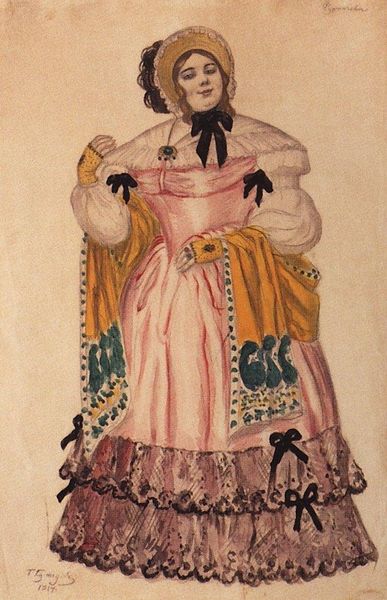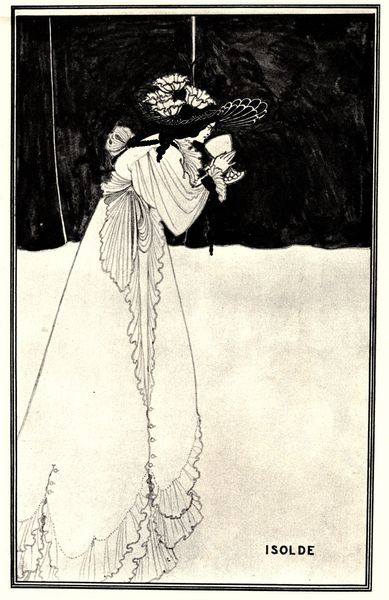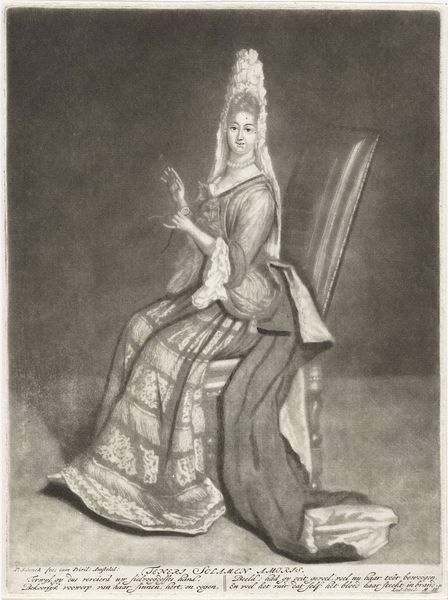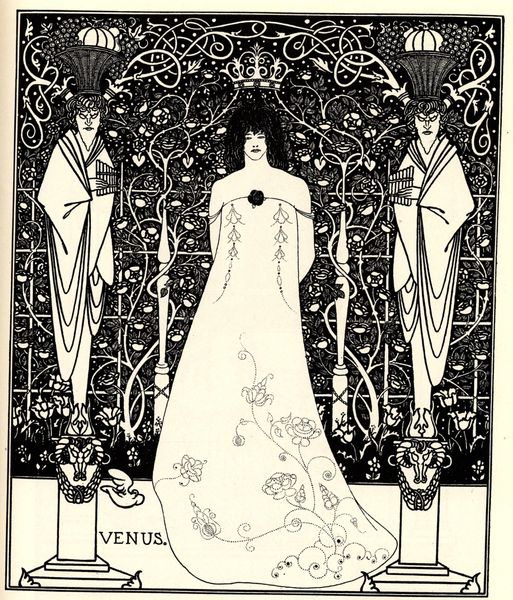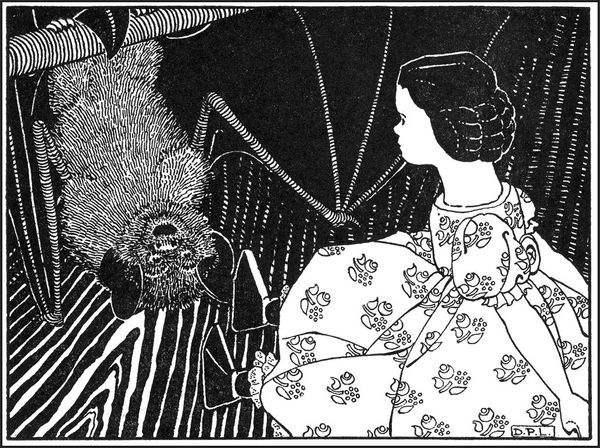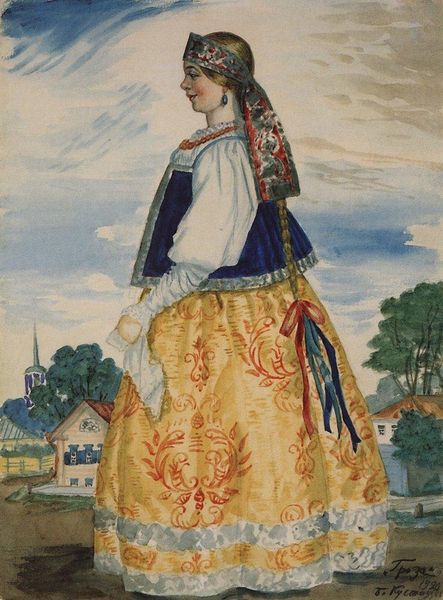
Copyright: Dorothy Lathrop,Fair Use
Editor: Here we have Dorothy Lathrop's 1929 drawing "HITTY by Rachel Field 22," created with ink on paper. It has a portrait style and makes me think of an illustration. The intricacy of detail in the dress is incredible. How would you interpret this piece? Curator: Observe how the composition uses stark black and white to define space and form. Note the geometric shapes underlying the floral patterns, suggesting a tension between the organic and the structured. How does the artist create depth, considering the limitations of the medium? Editor: Well, the patterns in the dress and backdrop create some visual complexity, while the solid black behind the figure makes her pop forward. It's interesting that it still has such clear dimension with no colour. Curator: Precisely. Consider also how the line weight varies. Heavier lines define the figure's outline, while delicate, almost invisible lines create the lace texture. This interplay of line weights impacts how our eye travels across the artwork, yes? Editor: Yes, I see that now. The thinner lines definitely give that sense of delicate fabric. How much does the title contribute to our understanding? Curator: Intriguingly, it positions the work as a depiction of a specific figure, "Hitty," which implies a narrative function. Can we deduce aspects of that narrative simply from the formal qualities of the portrait, regardless of outside knowledge? The dress might reveal status, or personality through details, no? Editor: That’s a great point. The formality suggests maybe a bride? And the dress is intricate and precise, so someone particular perhaps? I appreciate how paying close attention to the formal elements brings out aspects of the subject's implied character and social context. Curator: Agreed. Formal analysis encourages an awareness of both intention and cultural reception that helps illuminate any artwork, doesn't it?
Comments
No comments
Be the first to comment and join the conversation on the ultimate creative platform.
